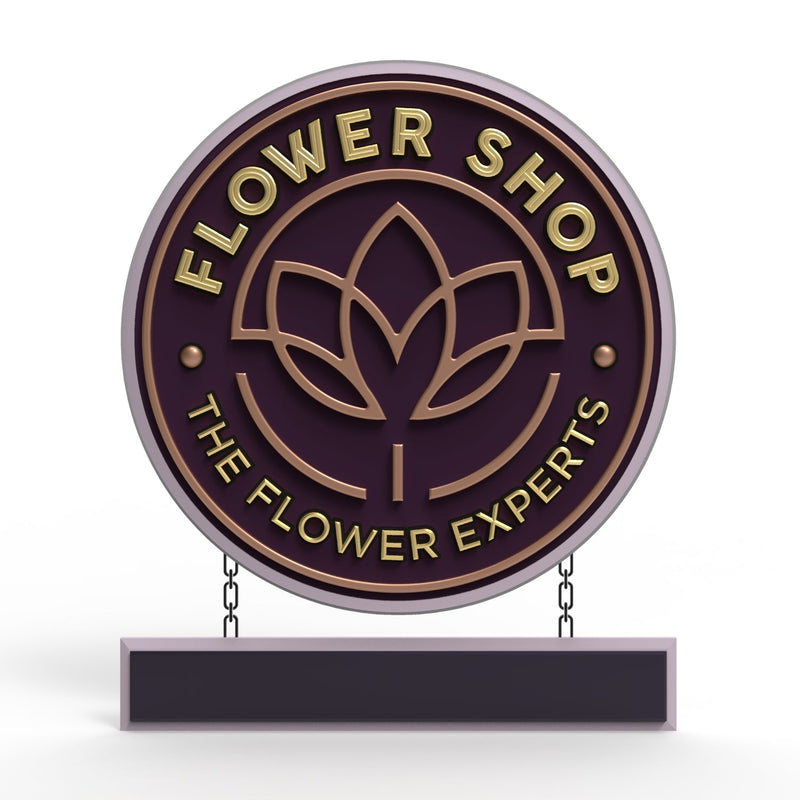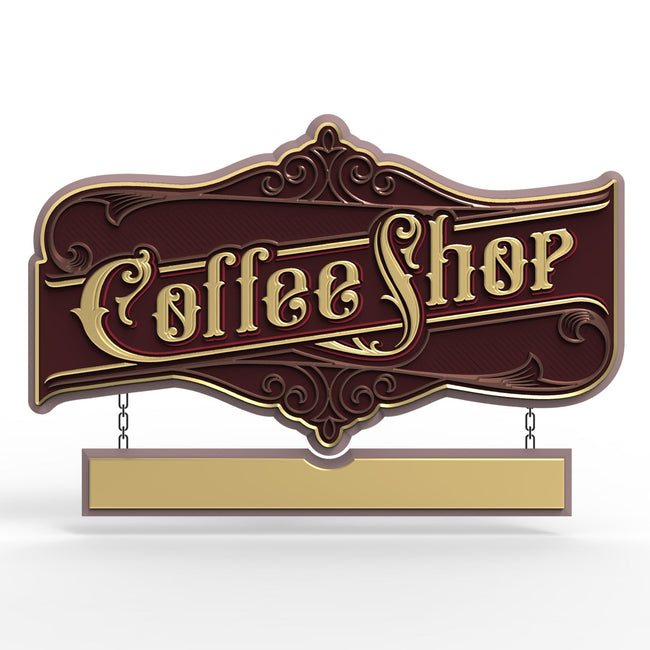Introduction
Carved signs are a favorite for businesses that want a classic, premium look with strong visibility. When you’re trying to reach people moving in different directions or attract attention from both vehicle lanes and sidewalks, double-sided carved signs step in as a compelling option. They offer two readable faces in a single footprint, which can be the difference between being noticed once and being noticed twice.
Still, double-sided isn’t always the automatic choice. The second face adds weight, wind load, finishing work, hardware considerations, and cost. It may also change how the sign mounts to your building or post and how it performs in your local climate. The right decision comes from understanding traffic patterns, sightlines, installation methods, and maintenance realities, not just aesthetics.
The Pros and Cons of Double-Sided Carved Signs
What counts as a “double-sided carved sign”?
A double-sided carved sign has two finished faces, front and back, so a viewer approaching from either direction can read the message. Common formats include:
-
Blade or projecting signs mounted perpendicular to a building façade on a bracket, typically over a sidewalk.
-
Hanging post-and-arm signs near entrances, driveways, or sidewalks.
-
Monument signs with two carved faces in a single freestanding structure positioned near a road or plaza.
-
Pylon or post-mounted panels with two faces visible to two-way traffic.
Carving methods vary (HD-Urethane/HDU, cedar, redwood, PVC, or composite panels with carved and applied elements), but the two-face concept is consistent.
The advantages (when double-sided is the right fit)
1) Twice the approach visibility
If people approach from both directions, two faces mean two chances to be read. For corner lots, mid-block storefronts with foot traffic in both directions, or two-way roads, this is a major visibility boost.
2) More opportunities to capture quick glances
Short viewing windows, think cars at 20–30 mph or pedestrians glancing while checking their phones, benefit from having a readable face, no matter which way someone turns their head.
3) Efficient use of space
Projecting and post-mounted double-sided signs deliver two impressions within the same footprint. In tight urban streetscapes where wall space is limited, it’s an efficient way to be seen without widening your sign.
4) Clear wayfinding
If your entrance isn’t obvious, a perpendicular, double-sided blade sign can act like a beacon from either direction along the sidewalk. For campuses or multi-tenant sites, a double-sided monument sign helps orient visitors arriving from multiple entries.
5) Branding consistency across approaches
Two faces let you present the same identity to both streams of traffic, preventing the “back of sign” dead zone that can look unfinished.

The trade-offs (and when single-sided may be smarter)
1) Increased weight and wind load
A second finished face often means a thicker or heavier panel, plus more robust brackets or posts. On projecting signs, hardware must be rated for the added load and local wind exposure. In very windy corridors or coastal areas, the engineering may drive up costs or require design adjustments.
2) Higher material and finishing costs
Two faces require more carving, finishing, paint, gold leaf, or protective coatings. While not simply double the price in every case, expect the second face to be a meaningful cost driver.
3) More complex mounting
Perpendicular installations require secure anchoring into solid structure (masonry, reinforced stud bays, or engineered posts). Swinging vs. rigid mount decisions also matter (see below). If your façade can’t take the load, you may need alternative placement.
4) Permitting and clearance constraints
Municipal sign codes often specify minimum sidewalk clearance (commonly 7–8 ft to the bottom of the sign), projection limits from the façade, and maximum area per face. A double-sided design must meet these constraints on both faces and in plan view.
5) Maintenance access
You have two faces to inspect, clean, and maintain. If your sign is high or over a busy sidewalk, maintenance may require lifts or temporary closures.
6) Not always necessary
If your audience comes from a single approach (e.g., one-way street with most customers from the same direction, or a recessed storefront visible primarily from one vantage), a single-sided sign facing the dominant approach may deliver equal impact with less complexity.
Where double-sided carved signs excel (use-case scenarios)
-
Walkable main streets with two-way foot traffic: A blade sign perpendicular to the façade captures attention from both sides of the sidewalk and stands out among flat wall signs.
-
Corner storefronts and alleys: People round corners from multiple directions; a double-sided face remains legible either way.
-
Two-way vehicular corridors: Monument or post-mounted signs at property lines can face both lanes, increasing approach reads.
-
Courtyards and plazas: Visitors circulate around a central area; two faces help guests orient from different paths.
-
Multi-tenant centers: Shared monument signs with double-sided faces provide tenant listings to drivers approaching from both directions.
Materials and finishes: durability for both faces
-
HDU (High-Density Urethane): Stable, won’t warp, resists moisture, carves cleanly, and holds paint well. Great for intricate detail on both faces.
-
Cedar/Redwood: Classic grain and depth; requires thoughtful sealing and periodic maintenance, especially when both faces are exposed.
-
PVC/Composite: Smooth faces; good for painted finishes and dimensional appliqués; consistent in variable climates.
-
Aluminum composite backing: Adds rigidity without too much weight; helps resist panel deflection on larger double-sided pieces.
FAQs (Frequently Asked Questions)
Q1: Do double-sided carved signs always cost twice as much as single-sided?
Not necessarily. There are economies of scale in layout, tooling, and installation. However, finishing two faces, sealing edges, and upgrading hardware do add meaningful cost. Expect a higher price, but not a strict 2x in all cases.
Q2: Which materials hold up best for a double-sided blade sign?
HDU is a strong choice for weight control, stability, and crisp carving on both faces. Cedar or redwood deliver beautiful grain but need diligent sealing and periodic maintenance. PVC and composite options work well for painted finishes and dimensional appliqués.
Q3: How big should the letters be on a projecting double-sided sign over a sidewalk?
Use the rule of thumb of about 1 inch of letter height per 10 feet of viewing distance. For typical urban sidewalks where people read from 30–60 feet, 3–6-inch primary letters are a practical target.
Q4: Is a swinging or rigid mount better?
Rigid mounts present a steadier read and cleaner brand presentation, especially in wind. Swinging mounts can reduce stress on brackets and add charm, but they may blur the message during gusts. Choose based on site wind conditions and brand priorities.
Q5:Can I add lighting to both faces without cluttering the look?
Yes. For blade signs, low-profile downlights on the bracket can wash both faces. For monuments, landscape spots aimed at each face keep fixtures discreet. Always plan wiring and service access in the design stage.
Q6: When is a single-sided sign the better choice?
If nearly all your traffic approaches from one direction, your façade faces a one-way street, or your structure can’t support a perpendicular projection, a single-sided wall sign (or a one-sided panel on a post facing the dominant approach) may be more effective and economical.
Conclusion
Double-sided carved signs shine where audiences come from multiple directions and where a perpendicular or freestanding presentation can live in clean sightlines. They multiply exposure without expanding your footprint and can anchor a storefront’s presence in busy pedestrian districts or along two-way roads.
That said, the second face brings added weight, wind load, hardware requirements, and maintenance. Success depends on honest site assessment—traffic patterns, code constraints, structural capacity, and long-term upkeep—paired with disciplined design choices that favor legibility over ornament.
If your location supports a perpendicular or freestanding installation and you’re courting attention from both directions, a double-sided carved sign is often a smart, brand-forward investment. If your audience approaches from a single dominant direction, consider directing budget toward a larger, high-contrast single-sided solution with strong lighting and simple, readable copy. Either way, a thoughtful approach rooted in sightlines, structure, and clarity will pay off for years to come.
Getting high-quality 3D carved signs has never been this easy! We use only the highest quality material and paint finishes available for unmatched elegance and longevity. Check out Carved Signs and our outstanding sign collection. Just pick your style and customize it - we do the rest! Feel free to contact us online or call us at +1 (970)-455-8443.




